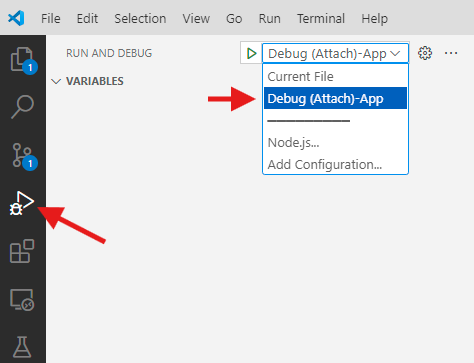This project uses Quarkus, the Supersonic Subatomic Java Framework.
If you want to learn more about Quarkus, please visit its website: https://quarkus.io/.
Quarkus offers a complete Command Line Interface (CLI) solution. If you have it installed on your dev environment, you can check the available options with
quarkus --helpBesides that, you can use maven|gradle commands to build your code. A maven wrapper is also available (if you select maven as your build tool), which results in you not necessarily having to have maven installed. You can use this wrapper through the mvnw file
Quarkus exposes port 8080 for the application, and port 5005 for debuggin. To enable it in VS Code, you need to map this configuration in your .vscode/launch.json file.
The file should look like the one below:
"configurations": [
{
"type": "java",
"name": "Current File",
"request": "launch",
"mainClass": "${file}"
},
{
"type": "java",
"name": "Debug (Attach)-App",
"request": "attach",
"hostName": "localhost",
"port": 5005
}
] By doing that, you can select Debug Mode when running the application, and execution will stop at the breakpoints you add to the code.
You can run your application in dev mode that enables live coding using:
# if you have quarkus cli installed, you can simply run: quarkus dev
./mvnw compile quarkus:dev
NOTE: Quarkus now ships with a Dev UI, which is available in dev mode only at http://localhost:8080/q/dev/.
A test/rest.http file is included in this repository.
With the application running, you can call the application endpoints with curl commands or using the http file for convenience.
The application can be packaged using:
./mvnw packageIt produces the quarkus-run.jar file in the target/quarkus-app/ directory.
Be aware that it’s not an über-jar as the dependencies are copied into the target/quarkus-app/lib/ directory.
The application is now runnable using java -jar target/quarkus-app/quarkus-run.jar.
If you want to build an über-jar, execute the following command:
./mvnw package -Dquarkus.package.jar.type=uber-jarThe application, packaged as an über-jar, is now runnable using java -jar target/*-runner.jar.
You can create a native executable using:
./mvnw package -DnativeOr, if you don't have GraalVM installed, you can run the native executable build in a container using:
./mvnw package -Dnative -Dquarkus.native.container-build=trueYou can then execute your native executable with: ./target/quarkus-ai-search-1.0.0-SNAPSHOT-runner
If you want to learn more about building native executables, please consult https://quarkus.io/guides/maven-tooling.
# Build or push project container image. (docker, podman and others)
quarkus image --help
# deployment application in different modes (kubernetes, kind, minikube etc)
quarkus deploy --help
- RESTEasy Classic JSON-B (guide): JSON-B serialization support for RESTEasy Classic
Easily start your RESTful Web Services

